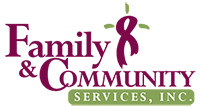Donation drives are a fantastic way to encourage community togetherness by raising spirits and resources for the people who need it most. They’re a meaningful act of support for a lot of nonprofit programs, but how do you go about organizing one? To address this, we’ve created a comprehensive guide in hopes of making these moments of community support a little less daunting.
Start by asking yourself some questions:
–
Who will the donations go to?
It’s important to not only consider which causes you care about most but to also know exactly where the donations will go. If you want to collect donations for domestic violence survivors, pinpoint a program or a network that understands and addresses their needs.
Consider searching our programs to discover a local cause you can work with directly.
What donations are needed?
Non-perishable food items? Hygiene products? Money? The same program can request different donations throughout the year, not just because of seasonality, but because they’re constantly accommodating new people and receiving new donations from others. It’s always best to ask them about their needs first before starting a donation drive, and from there, you can build a concrete list to share with the public.
Where will donations be collected?
Do you plan to work with local businesses, libraries, or schools? Is this an in-person effort or entirely digital? This helps determine who you need to contact and the types of donations you can receive.
When will the drive begin and end?
Make this clear to potential donors. Not everyone has the capacity to give immediately, so give them time to learn about it and consider their options. Give yourself ample time as well – the dates may come sooner than you think!
How do you get the word out?
Donation drives are a collaborative process, so think about how you can share your idea with others. Consider asking friends, family members, employers, and local facilities about promoting or hosting donation stations for your drive. Spread the word on social media and embrace the opportunity for your community to come together beyond the donations themselves.
How will you deliver the donations?
Not only should you think about how to transport the donations themselves, but you should also consider the process of delivering them to the program. Try scheduling your drop-off dates ahead of time, especially if you have a large quantity of donations; it makes the transition much easier for both parties.
While these questions may seem obvious, they’re essential to know, and they shape how you approach your donation drive, especially when conveying it to other people.
–
Specifics Are the Key to Success
A clear message makes it easier for people to donate. Make your list of possible donations visible, concise and actionable. Tell people exactly who benefits from their generosity and where their donations will go. Seek an outside perspective to see if your message is clear, and cut the fluff. Be specific but not technical. Details build credibility with potential partners and let people picture their decision as more than a drop in the bucket, so always specify when possible.
Encourage Mindfulness
When promoting your donation drive, advocate for the people receiving your donations. Social programs often receive rotten food, stained clothing, and a countless number of unusable items because people have a skewed idea of how they would be used. Encourage people to consider the effects of their donation, and try not to emphasize your drive as an opportunity to clean their cupboards. Your drive may still come across some unsavory donations, but if you do your due diligence and clear them before they’re delivered, the people you help will be more than thankful.
–
Local programs thrive off of events like donation drives, and they especially love the support of members of their fellow communities. We love to see our communities in action, so if you’re considering a donation drive, Go Forth and Do Good.
And remember: the best place to start is with a search.

